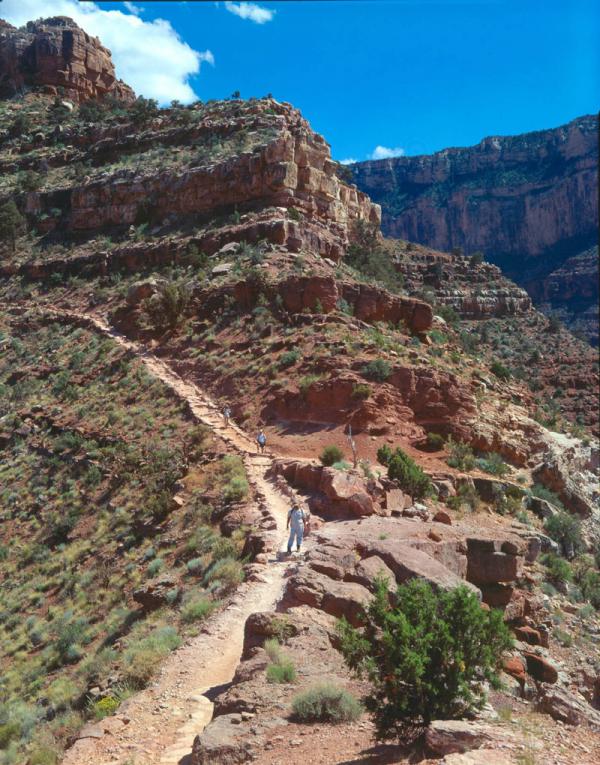
Grand Canyon's Birth Linked to Deep Earth 'Drip'

The birth of the Grand Canyon and the Colorado Plateau through which it carved have been a geological mystery. Now a giant anomalous structure discovered on the underside of the plateau could shed light on how it was formed.
Over the past 70 million years, and possibly quite recently, the relatively flat Colorado Plateau of the southwestern United States -- a 130,000-square-mile (336,000 square kilometers) region that straddles Colorado, Utah, Arizona and New Mexico -- rose up about 1.2 miles (2 km), was invaded by magma and was eroded away into deep valleys, creating a dramatic landscape including the Grand Canyon .
This kind of behavior is more expected with mountain belts, not plateaus, and so these events have perplexed geologists for more than a century.
"Anyone who goes to the Grand Canyon and looks down should think, 'What is it that made it this way?' The most immediate answer is water, that a river cut this canyon, but what is it that made the rock it lies in, the earth, move up?" said researcher Alan Levander, a structural seismologist at Rice University.
Deep Earth 'drip'
To learn more about the rise of the Colorado Plateau, Levander and his colleagues analyzed new data from the Earthscope Transportable Array of seismic stations. They focused on the lithosphere, the strong, long-lived crust and upper mantle of the planet, extending to a depth of about 90 miles (150 km), which sits on top of the asthenosphere, the hotter, weaker part of the mantle.
In the lithosphere under the Grand Canyon and much of the western half of the Colorado Plateau, scientists discovered an anomalously cold, dense region more than 120 miles (200 km) deep sinking into the Earth. This anomaly is apparently pulling off the lower part of the crust above it, activity that might lead to a major part of the unusual geological history in and around the Grand Canyon.
Sign up for the Live Science daily newsletter now
Get the world’s most fascinating discoveries delivered straight to your inbox.
The researchers think the cold region was created by the asthenosphere invading the lithosphere above it. As partially molten material expanded, cooled and solidified after flowing upward, it made the mantle portion of the lithosphere it invaded heavy enough to peel away and drip down. The more buoyant asthenosphere then filled the space left above, where it expanded and cause the Colorado Plateau to uplift.
The scientists conjecture this "mantle drip" formed in just the past 6 million years, and is just the most recent such anomaly occurring around the edges of the Colorado Plateau in the past 20 million to 30 million years. The timing of this event has implications for the effort to pinpoint the age of the Grand Canyon.
How old is it?
"There are generally two schools of thought on the age of the Grand Canyon one is that it formed in the last 6 million or 7 million years, and the other is that it has a much longer history as a canyon. Our results suggest it's the younger date that's more accurate," Levander told OurAmazingPlanet.
Seismologist George Zandt of the University of Arizona, who did not take part in this study, agreed that "these findings would tend to support the idea of at least a young component of the uplift." However, they don't eliminate the possibility that there might have been an earlier phase of the uplift also, potentially keeping the idea of an older Grand Canyon alive, he added.
These drips are increasingly found all over the Earth, potentially including the western part of the Mediterranean, the central Andes and Tibet, and they could yield clues about how the upper mantle influences the surface of Earth's continents.
"They're a new component to our understanding of how continents evolve that we're just trying to figure out now," Zandt told OurAmazingPlanet.
Levander now proposes to go with more seismometer stations to image the U.S. anomaly "and see if we can pull out more details." He and his colleagues detailed their findings in the April 28 issue of the journal Nature.










